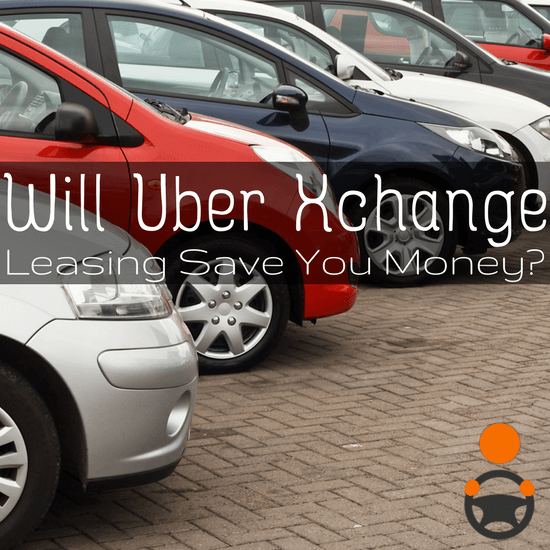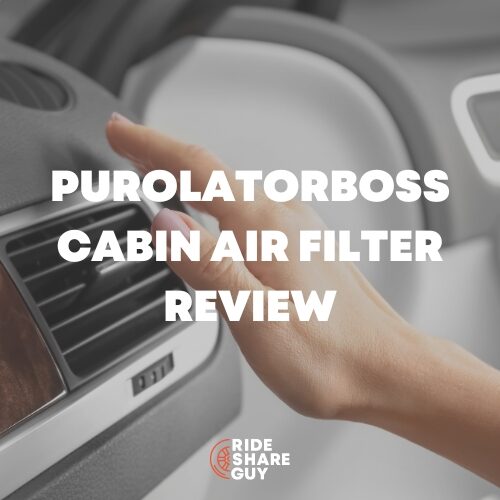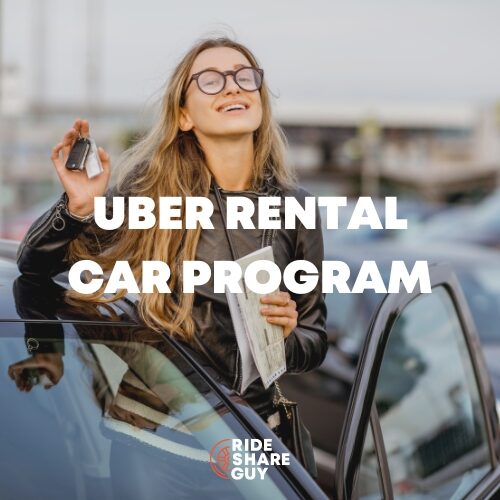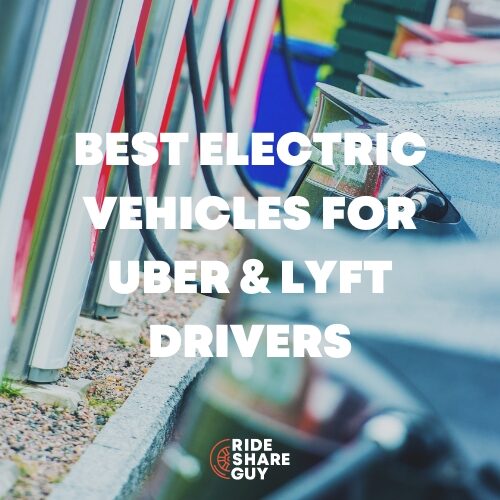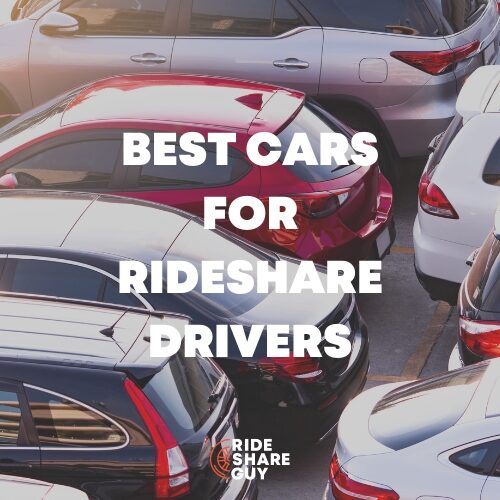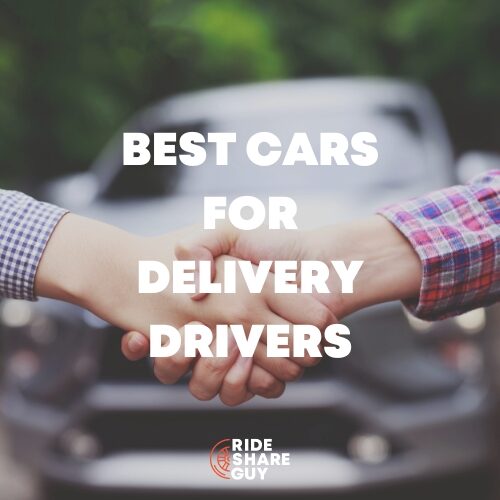Need a car to drive for Uber, Lyft, gig job, or a food delivery job?
Take a look at our vehicle marketplace for options!
Uber Xchange
I think most Uber drivers are better off owning their own car if they’re going to be a rideshare driver. But there are a few reasons why an Uber driver (or potential Uber driver) might want to do an Xchange lease. For some drivers with low or no credit, it may be the only way they can finance a vehicle. For others without a job, they may not have the money to buy a used car. Read on to see where you fit.
8. Reasons Why You Shouldn’t Get an Uber Xchange Lease
Since the general answer on the Uber messages boards is that this is a bad idea, it seemed appropriate to start with why you don’t want to do it.
1. You already own a car suitable for ridesharing
As you will see under the “Total Cost of Ownership” section, the least expensive option for rideshare driving is to own your own car and drive it for Uber. Driving your own car has the lowest total cost of ownership (TCO), the most tax advantages and, if you already own a car, you can get started driving the second your application is approved. If you already have a vehicle that qualifies as a rideshare car, there’s no compelling reason to examine the Xchange program.
Related: Is Your Car Eligible to Drive with Uber?
2. You can buy a car suitable for ridesharing
Maybe your current car doesn’t qualify as a rideshare vehicle because it’s too old. Maybe you don’t want to expose your personal vehicle to the kind of wear and tear that rideshare driving will inevitably put on your vehicle. If you can buy a second vehicle to use only for rideshare driving, then that is still your best bet from a financial standpoint. If this option is available to you, this is the one you should take.
The only risk here is that you have to be sure that you want to drive for Uber. If you buy a car to drive and then it turns out that you hate it, that’s a bad investment.
3. You don’t plan on driving 500-750 miles a week
If you’re not driving that many miles for ridesharing, the wear and tear on your car – and the associated depreciation of its value – won’t be that big of an issue. In this case, there’s no compelling reason to go through the expense of an Xchange lease.
4. You want a particular model of car
The choices of cars available in the Xchange program can sometimes be few. While the program lists a lot of cars on the website, finding the exact model you want may be difficult – especially if you want to lease one of the used vehicles they have available.
Related: Is the Toyota Prius the Best Vehicle for Rideshare Drivers?
5. You want the lowest monthly payment
The monthly payment for an Xchange lease can be more than twice what the payment would be if you were purchasing the car. The reason for this is the miles they expect you to put on the car. If you bought the car, you would pay for those miles when you sell it or trade it in. With an Xchange lease, you’re paying for those miles in the payment upfront. So if you’re looking for a low monthly payment, there are much cheaper ways to get a car.
6. You want the lowest Total Cost of Ownership (TCO)
Xchange offers new and used cars, and the used cars are definitely less expensive than the new ones. But every time I ran the numbers, leasing a car through Xchange always cost more than buying it. Without going into details, consider the numbers for a 2013 Nissan Altima.
Leasing it and returning it to Uber costs $12,168. Getting a 5% loan for the same period (24 months), paying it off, and selling the car for its market value costs $10,342. Leasing it and keeping it costs $16,158, and buying it and keeping it costs $13,576. As you can see from the table below, the numbers for the other cars don’t look any better. The 2016 Corolla looks really bad!
7. You’ve already tried the program
For some reason, you’re only allowed to use the Xchange program once. There are other programs you can use later, but you can only use this program once. So even if you get into an accident and your Xchange vehicle is totaled, you won’t be able to get a new car. You can find other options though on our vehicle marketplace here.
8. You don’t need another credit inquiry
The moment you click “Apply” on the Xchange website, there will be another inquiry on your credit report. If you haven’t any in a while, that’s no big deal. But too many inquiries within a short period of time can drop your credit score and make it harder to buy a car if you decide to do that.
6. Reasons Why You Should Get an Uber Xchange Lease
It’s not like there are no reasons to do this! If these reasons apply to you, then maybe this is the program for you.
1. You don’t want to put miles on your car
A lot of people like the idea of Uber but don’t want to put the miles on their car. If you don’t want to do that, then you need another car. You need to either buy it or lease it.
Related: The 5 Best Mileage Tracking Apps for Rideshare Drivers
2. You can’t buy a qualifying car, or second car
If you don’t have a qualifying car, or don’t want to use the one you have, then you need another car. If you don’t have the verifiable income or credit score to qualify to buy a new car, then there aren’t a lot of choices. You might be able to rent one through one of those programs, but they’re even more expensive than this one. The Xchange program seems to be designed for people in that situation.
3. You want a predictable TCO
The total cost of ownership with an Xchange lease will likely be higher than if you bought and sold a car, but it will also be unpredictable. You can predict the cost to buy the car. You really don’t know how many miles you’re going to put on it or how much those miles are going to subtract from the value of the car if you sell it or trade it in. Xchange offers a very predictable TCO.
4. You want a higher tax deduction than a rental
In addition to costing more than Xchange, renting a car doesn’t allow you to deduct mileage. From a deduction standpoint, an Xchange lease is like owning a car. You can either deduct actual expenses (lease payment, gas, maintenance, tires), or take the standard mileage deduction of $.535 per mile. You cannot take the standard mileage deduction with a rental.
5. You want an easy out
Xchange allows you to return the car at anytime after the initial 30 days. All you have to do is give them two weeks notice. Multiple Uber drivers have reported that they have returned their cars with no problem.
6. You want free oil changes
Although I figured it into the TCO analysis above, I thought it important to mention that the lease does come with free oil changes and cabin air filter changes. You do have to go to particular shops, of course, but they are free.
Takeaway
Pretty much it comes down to whether or not you already own an eligible car or can qualify to buy one. If you can, then it’s almost always in your best interest to do so. The Xchange program has a few minor advantages (like a predictable TCO), but everything else is in favor of buying.
Interested in signing up with Uber Xchange? You can find the program here and more options for leasing/rental at our vehicle marketplace here.
Readers, what do you think of the Xchange leasing program? Have you used Xchange? Leave your questions or comments below.
-Curtis @ RSG

Related articles:
